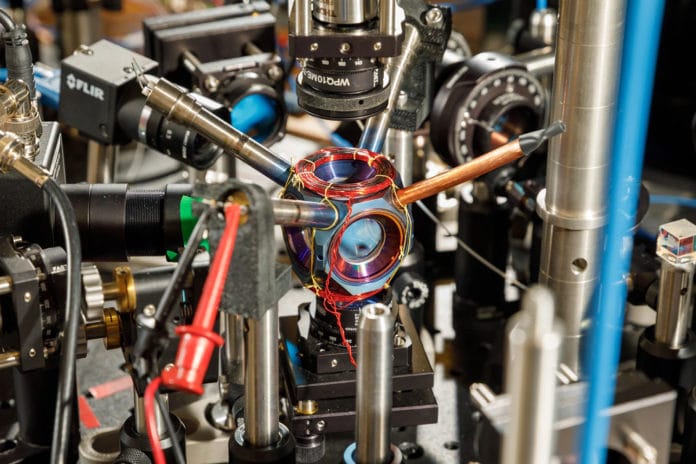Most modern devices around the world use GPS for wayfinding thanks to atomic clocks, which are known for extremely accurate timekeeping, hold the network of satellites perfectly in sync. But GPS signals can be jammed or spoofed, potentially disabling navigation systems on commercial and military vehicles.
Now, Sandia National Laboratories has designed and built the avocado-sized vacuum chamber as a core technology for next-generation navigation systems that don’t rely on GPS satellites. Based on the idea that was used in missiles during the Second World War, the avocado-shaped system is the first device that is small, energy-efficient, and reliable enough to potentially move quantum sensors – sensors that use quantum mechanics to outperform conventional technologies – from the lab into commercial use.
“Quantum sensors are a growing field, and there are lots of applications you can demonstrate in the lab,” said Sandia postdoctoral scientist Bethany Little, who is contributing to the research. “But when you move it into the real world, there are lots of problems you have to solve. Two are making the sensor compact and rugged. The physics takes place all in a cubic centimeter (0.06 cubic inches) of volume, so anything larger than that is wasted space.”
Schwindt partnered with Sandia materials scientists to build the chamber out of titanium metal and sapphire. These materials are especially good at blocking out gasses like helium, which can squeeze through stainless steel and Pyrex glass. This self-contained system uses accelerometers and gyroscopes to calculate where the navigation device is in relation to a fixed, known position by measuring every rotation and movement of the device along all three axes. If these measurements are accurate enough, the results can rival those of GPS.
In new work, scientists have found that quantum sensing can work without a high-powered vacuum system. This shrinks the package to a practical size without sacrificing reliability.
Instead of a powered vacuum pump that whisks away molecules leaking in and wreck measurements, a pair of devices called getters to use chemical reactions to bind these intruders. Each is about the size of a pencil eraser, so you can fit them inside two narrow tubes sticking out of the titanium package. They also work without a power source.
Scientists continue to test the device to bring it to the required level of reliability. Their goal is to keep it sealed and operational for five years, an important milestone toward showing the technology is ready to be fielded. In the meantime, they’re exploring ways to streamline manufacturing.
